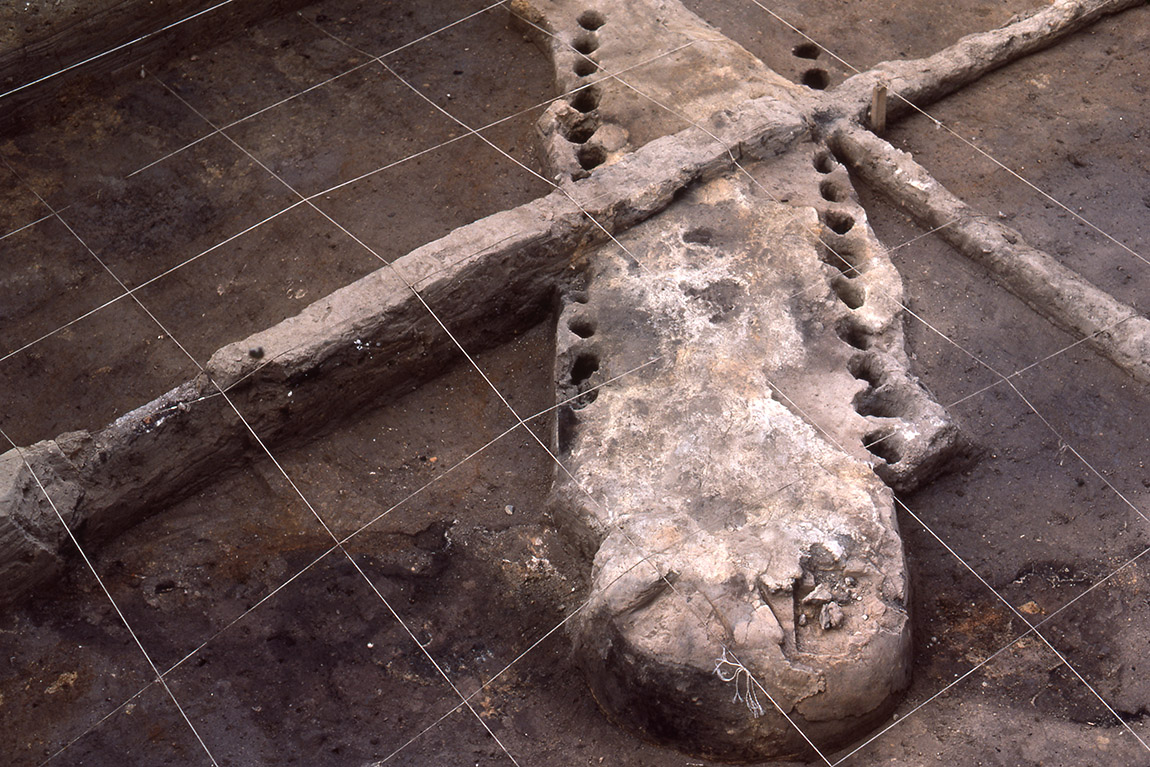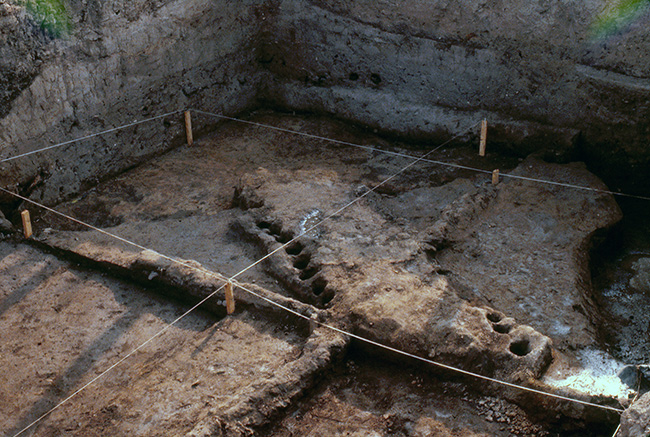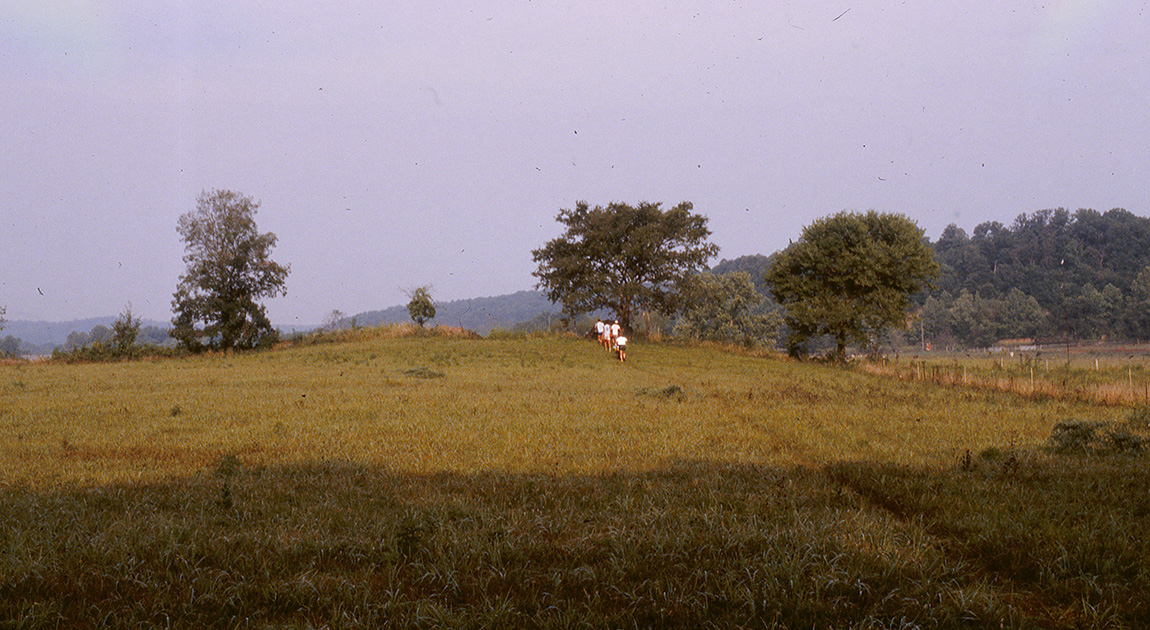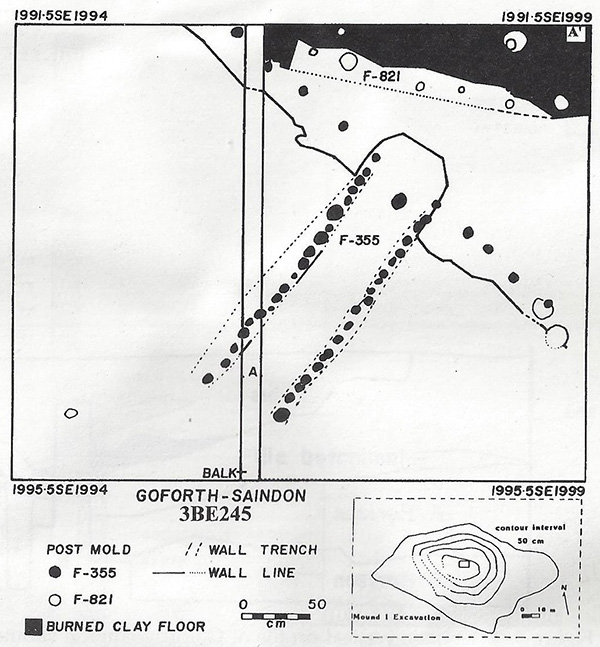
Feature of the Month - September 2023

This is a brief summary of an article by Dr. Marvin Kay and Dr. George Sabo III published in Southeastern Archeology (Kay and Sabo 2006:29-47) – see the article for more detail and the full story of Feature 355.
Feature 355 from the Goforth-Saindon site (3BE245) is a Harlan-style charnel house that was partially excavated by University of Arkansas Archeological Field Schools in the early 1980s (Figures 1 & 2). The Goforth-Saindon site is one of several late precontact Caddoan mound sites located in NE Oklahoma and NW Arkansas (Figure 3). The purpose of a charnel “house” was the housing of the dead for a period of time before burial elsewhere. This house was constructed within a submound pit or basin, and it had been built on top of a similar, previous structure (Feature 821). The structures were used, ritually destroyed, and eventually a mound was built over the remains. These types of structures are referred to as Harlan-style based on the first of their type uncovered at the Harlan site in Oklahoma (described by Robert E. Bell below) and found at other sites in the region:
The mortuary structures are similar in form to the houses in the villages, a square structure having four large, centrally placed posts for supporting the roof. The walls were made with upright wooden posts that served as reinforcing for a wattle-and-daub plastered wall. The roof was covered with thatch supported on a cane and wooden framework. The entranceway is usually marked by shallow parallel trenches or rows of post holes forming a short hall-like entrance passage into the interior. The entranceway is sometimes marked by an elevated clay platform and indications of special preparation. The interiors are not marked by special features although numerous extra postholes commonly surround the walls or appear in the interior, suggesting structural reinforcement or special constructions. That these structures functioned as mortuaries is indicated by the general absence of debris or rubbish on the floors, as if the structure had been cleaned out prior to destruction, the absence of interior fire places, and the presence of postholes for closing the entranceway. The finding of human skull fragments in the mortuary area also supports this usage, and indicates that the clearing of the mortuary for interment elsewhere was not always complete (Bell 1984:229-230).


Only the southwestern-facing wall and the entryway for Feature 355 were excavated (Figures 4 & 5). The wall posts were individually set, while the entryway posts were set within two deep wall trenches. Prior to the destruction of the building, the structure was cleaned, clay patches were added to worn-out parts of the floor and the entryway was completely resurfaced. A post was set in the middle of the entryway just before entry into the structure, and a clay pedestal was installed, creating a step down onto the structure floor. The structure was then burned.
The entryways of these Harlan-style structures are generally oriented to the southwest or the winter solstice sunset, unlike other structures on these sites. Analysis of these types of structures indicate that a late precontact mortuary ceremonialism was present in the Arkansas River Valley and western Ozark highlands that was calendrically keyed to the winter solstice sunset, revealing a metaphor in the structural relation of death: winter, physically represented in the archeological remains and in ethnohistoric accounts.

References
Bell, Robert E.
1984 Arkansas Valley Caddoan: The Harlan Phase. In Prehistory of Oklahoma, edited by R.E. Bell, pp. 221-240. Academic Press, New York.
Kay, Marvin and George Sabo III
2006 Mortuary Ritual and Winter Solstice Imagery of the Harlan-Style Charnel House. Southeastern Archaeology 25:29-47.
See also:
Sabo, George III, editor
1986 Contributions to Ozark Prehistory. Research Series No. 27. Arkansas Archeological Survey, Fayetteville.
Feature of the Month Series
Archeological features are elements or structures that are nonportable or cannot be easily removed from a site (such as a wall or a post hole). Archeologists document archeological features extensively in the field to record what will otherwise be destroyed in the process of excavation. The records of these features are often all that is left at the end of an excavation. Excellent record keeping is necessary for these features to provide insight into the archeological record and site formation.
In this series, we present interesting and important archeological features that have helped archeologists to better or more fully understand the sites on which they were working. New features will be added monthly. Find the list of features here.
